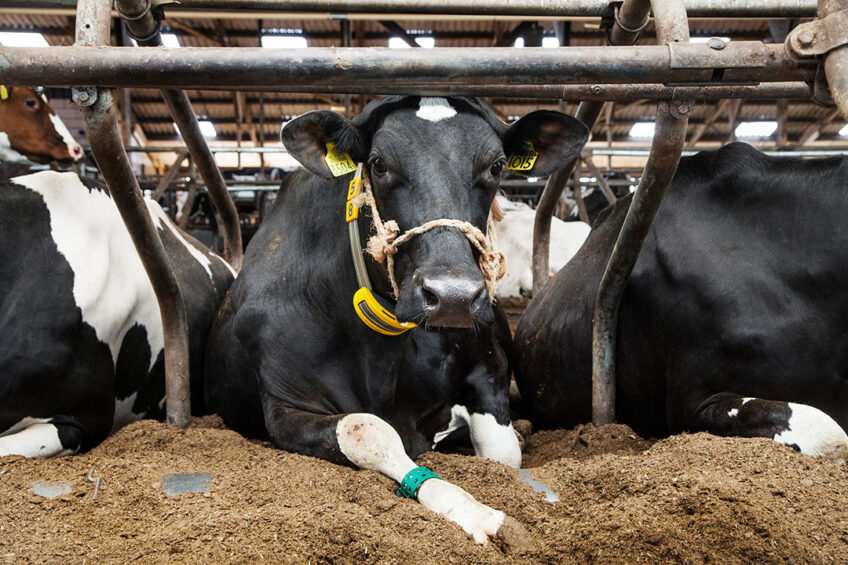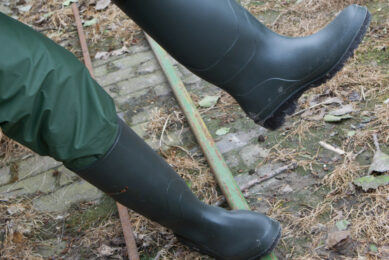Know your cows before using technology

The use of technology and associated data analytics is the next scientific breakthrough for the dairy industry. But a prerequisite for success is that a farmer understands the animals. “You can better be cow-savvy than tech-savvy”, says Dr Jeffrey Bewley, dairy housing and analytics specialist at Alltech.
Dr Bewley spoke at the dairy session at ONE19: The Alltech Ideas Conference, which was held in May in Lexington, Kentucky and organised by animal nutrition company Alltech. His presentation: Get tech savvy on your dairy, focused on where sensors, robotics and other emerging technologies come into play at a dairy farm.

The next big breakthrough
Dairy farms are becoming larger and this challenges the craftsmanship of dairy farmers to keep the cows healthy and productive. An increasing amount of technology and tools are coming to market that help dairy farmers to do just that and help them to get the best out of the animals. There are many opportunities for technology and data in the dairy industry. And we are just at the beginning, considering that agriculture is the least digitised sector out there. This means that it is not a question of if we can produce enough food in the future, because we simply will. “By using technology, we will be able to take agriculture to new heights and this is changing the way we run a dairy farm,” said Bewley. He sees data analytics as the next scientific breakthrough for our industry. “In livestock farming we already made massive improvements and scientific breakthroughs when it comes to animal nutrition, genetics and animal health. The use of data analytics is in my opinion the next breakthrough for our sector. The technology and data will help us find answers and solutions for the challenges that dairy farmers face today. Think of increased pressure and regulation on animal welfare and environment. The technology and the smart use of new and old data will help us with these challenges.”
Measuring variables over time
Dr Bewley: “We have lot of information about the animal. We gather data on behaviour, estrus, mastitis, fresh cow disease, lameness, calving and genetic traits. But to get a grip on this we need technology. Cows talk to use via different ways and with sensor or other technology we are able to pick up these data and see trends. In the end it all comes down to monitor individual cows over a longer period of time to spot possible causes of a certain disease or behaviour and to see anomalies”. Being able to measure certain variables (such as rumination or lying time) across time gives us more interesting insights than measuring certain data only when needed. This can help to better manage animals at group or herd level. It becomes even more interesting if data from multiple sources are being brought in for data analytics. Dr Bewley explained that a lot of new technologies for agriculture are already on the market. “Automated milking systems (milking robots) have been around for quite some years now and have changed the way we dairy. They are constantly improved. Now we are entering a new phase in milking where parts of the conventional rotary and parallel parlours are being automated. This will increase the amount of data that becomes available to the farmer,” he says.

Automatic feeding and use of imagery
But the market is moving fast. Bewley: “Think of the development of automated calf feeding systems. This allows us to better house calves in groups and with that stimulate the natural behaviour of the animals. Also precision feeding systems are being used more. Think of systems that automatically prepare the feed and deliver this to the cows. All without manual labour. We also see great things happening with NIR technology within the mixing and loading wagon. This allows us to have real time measurements which can help the farmer limit the variability in forages, by doing real-time adjustments in the dry matter content for example.” The more recent developments include the use of drones, to hover over a silage pile and measure inventory levels, virtual fencing technologies and the use of imagery, and video to measure feeding behaviour or to use in genetic analysis to measure breeding phenotype traits such as udder depth in a more objective way. “The benefits of image based technology is that a lot of data can be gathered simultaneously, if you invest in one camera for example. The costs are fixed and spread across more animals (compared to sensors for each cow for example),” according to Dr Bewley.
New use of existing data
But it is not per se needed to gather a lot of new data, says Dr Bewley. “Indeed, the landscape of technology is changing and there are a lot of players getting involved in livestock technology. This not mean we have to gather a lot of new data, as the technology also entails us to look at existing (old) data in new ways. We have larger volumes of data, the data is coming at us at a faster speed and we have more variety of data. This means, the challenge is to know what to do with the data we have and understand what the data tells us.” Dr Bewley addressed that data analytics can reduce the risk and uncertainty that a dairy farmer has to deal with every day. “The data can manage that risk and uncertainty. For example, we can use data help us identify the most efficient cows in the farm. A farmer may not know who this cow is, as this cow is not always the one that produces the most milk. To better understand which animals are the most efficient ones in the barn, we can for example look at the ‘money corrected milk’ instead of the amount of kg milk. We can also use the ‘existing data’ to help us gain insights in what will happen to the farm profitability if we increase the average age of the herd, because we know that the milk production increases per lactation. We can also spot summer and winter differences and measure how the herd is dealing with heat stress and to see if the heat stress prevention measures are working,” he explained. It is all about looking at patterns and putting layers of data from different sources on top of each other. Alltech is for example doing this with mycotoxin patterns. Data analytics can help in getting more knowledge on how the mycotoxin contamination levels change across the country and time, and hence the level of damage that it can create.
Where to place the sensor? There are a lot of companies that produce and sell wearable technologies for dairy cows. If we can measure what the cows tell us, we can adapt to it. And most of all, we can intervene sooner. If a sensor tracks an elevated body temperatures, the fans and sprinklers can be turned on automatically. If a sensor records that a cow is lying most of the time, the farmer can double check if the cow has early signs of lameness for example and can prevent problems at an early stage. Sensors or trackers for cows can be placed around the neck, in the ear, attached to the leg or tail or placed in the rumen or in mouth. There is a wide variation in failure rate. A good sensor has a battery life of 3-5 years and less 2% of systems failure per year. The most common places for a sensor are:
|
The practical realities
The future is bright for using data and new technologies in the dairy sector, but Dr Bewley also makes a few side notes. “We have to deal with the practical realities. Many products are marketed as plug and play, but often its more plug and pray/ pay. And does a farmer always know if the technology work across time? It is important that farmers use the technology in preventing problems rather than just measuring what is happening. At the same time, we are dealing with new challenges such as the accuracy of alerts (are we measuring what we think we are measuring?), the handling of data, data security and ownership.” Dr Bewley addresses that the use of data pays off if a farmer understands the animals and is a real cow person. “You can better be cow-savvy than tech-savvy. People who are looking for an easy way out, won’t be successful with these technologies, he continues. Another challenge to overcome is to make sure the data interact better with each other. Dr Bewley: “A lot of data is locked in ‘silos’. Thinks of data from sensors, data from genetics, data from the milk buyer, nutrition data and financial data. They don’t interact with each other. This is not a technical issue, but more an issue of getting all the players to cooperate, and play in the sandbox together.” Dr Bewley concluded by saying: “technology is not going to change cows and people, but can change the way we farm and change cow and farmer wellbeing.”
Join 13,000+ subscribers
Subscribe to our newsletter to stay updated about all the need-to-know content in the dairy sector, two times a week.










